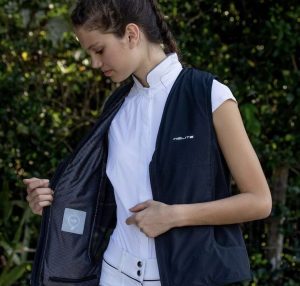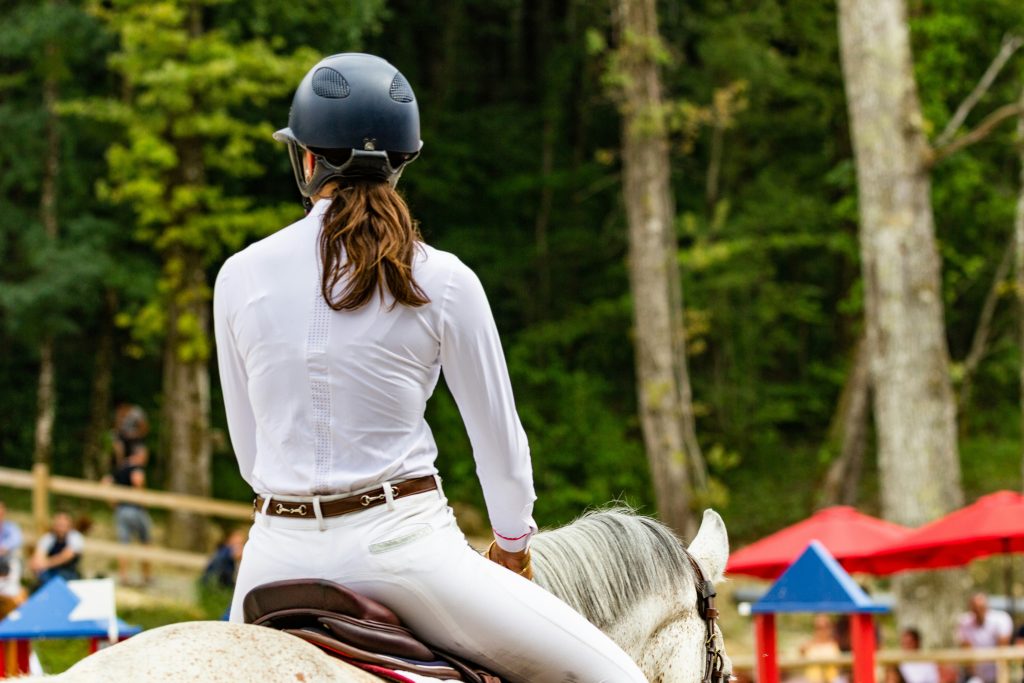Wearing a riding helmet can mean the difference between a minor fall and a life-threatening injury. Many riders believe myths about helmets that can put them at risk. Understanding the truth about riding helmet safety ensures better protection every time you ride.
Helmet Facts: Why Proper Head Protection Matters
1. Horseback Riding Has a High Injury Rate
Riding injuries happen just as frequently as motorcycle accidents. Research shows that horseback riders are hospitalized more often than motorcyclists, football players, and skiers. Horseback riding is a high-risk activity that requires proper safety gear.

Enhance Your Safety In The Saddle With Helite
Helite equestrian airbag vests have your back, chest, neck, and vital inner organs. Don’t risk it, wear the airbag.
Shop Helite Today
2. Most Head Injuries Happen Due to Unpredictable Horse Behavior
Horses can spook, buck, or bolt without warning, leading to severe head injuries. Surprisingly, 20% of serious head injuries happen when people are simply handling horses on the ground. A helmet protects riders and handlers alike.
3. Head Injuries Are the Leading Cause of Death in Equestrian Accidents
Every year, approximately 70,000 people seek emergency care for equestrian-related injuries. Of those, 12,000 suffer head injuries. Helmets significantly reduce the risk of fatal head trauma.
4. Certified Helmets Prevent Most Head Injury Deaths
Helmets that meet ASTM/SEI safety standards provide maximum protection. A snug fit and properly adjusted chinstrap ensure a helmet stays secure during a fall. Wearing an uncertified helmet offers little to no protection.
5. Most Serious Injuries Occur During Pleasure Riding
Many assume that jumping or racing causes the most injuries. However, most accidents happen during casual rides. Riders at all levels should wear a helmet every time they mount a horse.
Helmet Myths: Debunking Common Misconceptions
6. A Bike or Skateboard Helmet Works Just as Well
Cycling and equestrian helmets look similar, but they are designed differently. Horseback riding helmets cover more of the head and undergo rigorous safety testing. Only ASTM/SEI-certified helmets offer proper protection for riders.
7. Riding Slowly Eliminates the Risk of Injury
Speed does not determine injury risk. Falling from just a few feet off the ground can cause serious head trauma. Even experienced riders need helmets for protection, regardless of pace.
8. Expensive Helmets Offer More Protection
A higher price does not mean better safety. All ASTM/SEI-certified helmets meet the same protective standards. More expensive models may have added comfort features or stylish designs, but they do not offer extra impact protection.
9. Borrowing a Friend’s Helmet Is Safe
Sharing helmets can be dangerous. A helmet that has been dropped or damaged may no longer provide adequate protection. Riders should always use their own properly fitted helmet.
10. If There’s No Visible Damage, the Helmet Is Still Safe
A helmet must be replaced after any fall where it absorbs impact. Even if it looks fine, internal damage can weaken its protective abilities. Additionally, helmets should be replaced every five years due to wear and tear from sweat, heat, and exposure.
Conclusion: Prioritize Safety Every Ride
Riding helmets are a crucial part of equestrian safety. The right helmet can prevent serious injuries and even save lives. Understanding these facts and debunking myths ensures that every rider stays protected, no matter their experience level.

